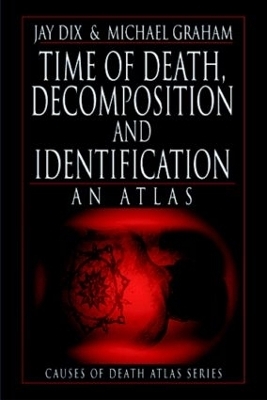
Time of Death, Decomposition and Identification
An Atlas
Seiten
1999
Crc Press Inc (Verlag)
978-0-8493-2367-6 (ISBN)
Crc Press Inc (Verlag)
978-0-8493-2367-6 (ISBN)
Offers a look at the determination of the time of death, postmortem changes and identification. This work helps you learn - through photographs and discussions - how estimating the time of death can rarely be accomplished with scientific accuracy. It also helps you learn about the changes the body undergoes after death.
A postmortem X-ray of a male homicide victim reveals a bullet lodged next to his spine. That he was shot is clear. How recently? is what death investigators must determine. The answer: the absence of scar tissue surrounding the bullet proves the victim had been recently shot.
And while the average person may find tattoos to be creative and aesthetic, to the trained death investigator, they can actually be the key to aiding in the eventual identification of a body.
They say the dead can't speak. But in the fascinating field of forensic pathology, the deceased can tell an elaborate story, especially when death investigators know what clues to look for.
The first volume in the new Forensic Pathology Atlases: Causes of Death Series, this book takes an in-depth look at the determination of the time of death, postmortem changes, and identification. In TIME OF DEATH, DECOMPOSITION AND IDENTIFICATION, you'll learn through the extensive use of photographs and discussion how estimating the time of death can rarely be accomplished with scientific accuracy. You'll learn about the numerous changes the body undergoes after death, and how positive and probable identifications are made.
For death investigators, law enforcement officers, attorneys, and anyone else involved in forensic death cases, TIME OF DEATH, DECOMPOSITION AND IDENTIFICATION is a "must have" resource.
A postmortem X-ray of a male homicide victim reveals a bullet lodged next to his spine. That he was shot is clear. How recently? is what death investigators must determine. The answer: the absence of scar tissue surrounding the bullet proves the victim had been recently shot.
And while the average person may find tattoos to be creative and aesthetic, to the trained death investigator, they can actually be the key to aiding in the eventual identification of a body.
They say the dead can't speak. But in the fascinating field of forensic pathology, the deceased can tell an elaborate story, especially when death investigators know what clues to look for.
The first volume in the new Forensic Pathology Atlases: Causes of Death Series, this book takes an in-depth look at the determination of the time of death, postmortem changes, and identification. In TIME OF DEATH, DECOMPOSITION AND IDENTIFICATION, you'll learn through the extensive use of photographs and discussion how estimating the time of death can rarely be accomplished with scientific accuracy. You'll learn about the numerous changes the body undergoes after death, and how positive and probable identifications are made.
For death investigators, law enforcement officers, attorneys, and anyone else involved in forensic death cases, TIME OF DEATH, DECOMPOSITION AND IDENTIFICATION is a "must have" resource.
Jay Dix
Preface TIME OF DEATH (POSTMORTEM INTERVAL) AND DECOMPOSITION Time of Death Introduction Rigor Mortis Livor Mortis Body Cooling (Algor Mortis) Scene Investigation Chemical Analyses Gastric, Microscopic Analyses Decomposition Adipocere Mummification Anthropophagia IDENTIFICATION Positive Identification Visual Identification Fingerprints Dental Radiographs (X-rays) DNA Fingerprinting Presumptive Identification Physical Features Clothing and Other Personal Property Circumstances Surrounding Death Skeletal Remains REFERENCES Case Examples Case 1 - Differential Decomposition Discussion Case 2 - Time of Death Case 3 - Gastric
| Erscheint lt. Verlag | 7.12.1999 |
|---|---|
| Reihe/Serie | Cause of Death Atlas Series |
| Zusatzinfo | 162 Halftones, black and white |
| Verlagsort | Bosa Roca |
| Sprache | englisch |
| Maße | 152 x 229 mm |
| Gewicht | 100 g |
| Einbandart | Paperback |
| Themenwelt | Studium ► 2. Studienabschnitt (Klinik) ► Pathologie |
| Studium ► 2. Studienabschnitt (Klinik) ► Rechtsmedizin | |
| Naturwissenschaften ► Biologie | |
| Recht / Steuern ► Strafrecht ► Kriminologie | |
| ISBN-10 | 0-8493-2367-3 / 0849323673 |
| ISBN-13 | 978-0-8493-2367-6 / 9780849323676 |
| Zustand | Neuware |
| Haben Sie eine Frage zum Produkt? |
Mehr entdecken
aus dem Bereich
aus dem Bereich
Klinisch-pathologische Übersichtskarten
Buch | Hardcover (2023)
Springer (Verlag)
CHF 48,95


